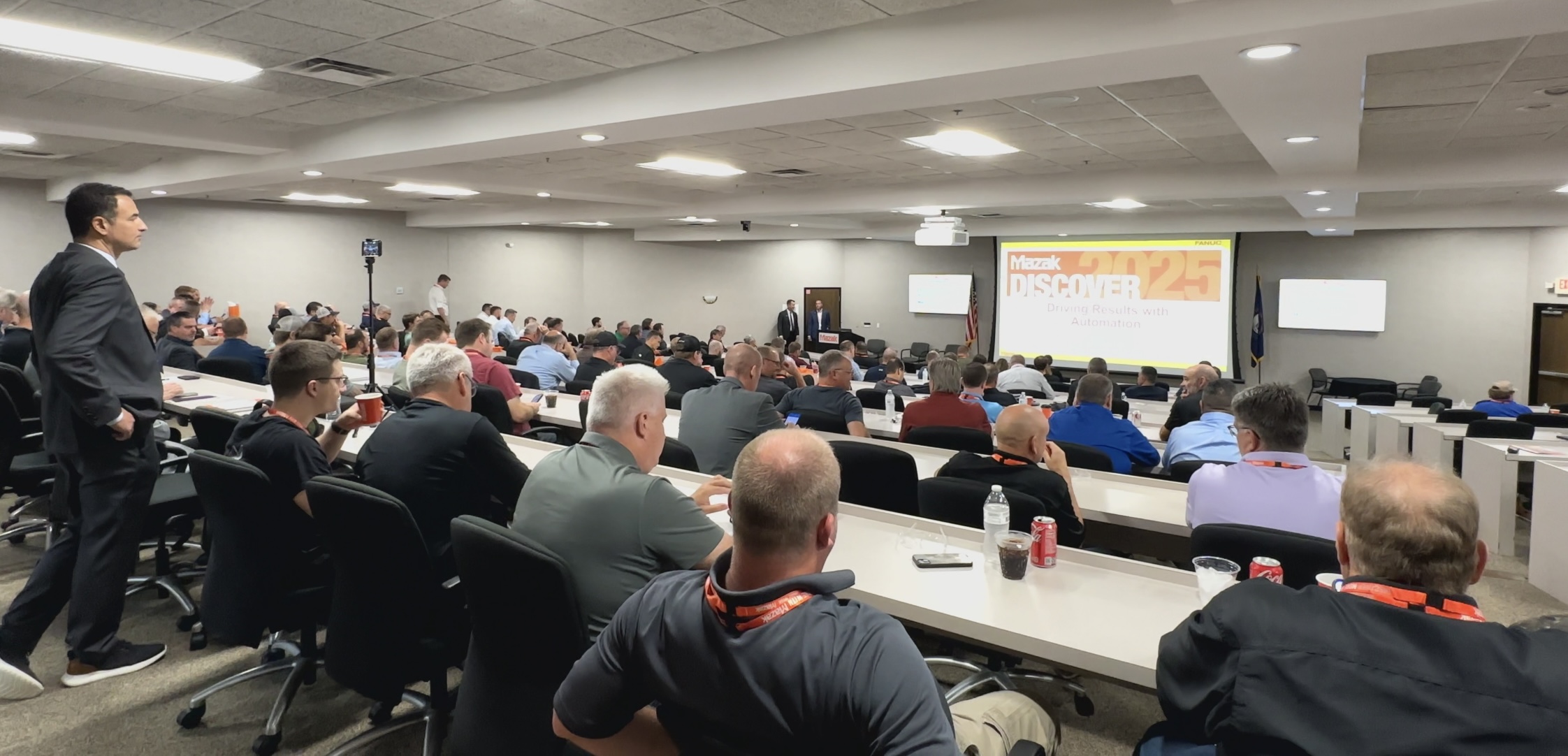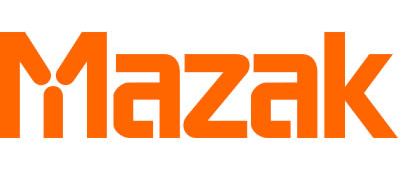
Addressing a crowded room at Mazak Corp.’s Discover 2025 event on Oct. 7, FANUC America Corp. President Mike Cicco emphasized the growing role automation plays within shops that strive to maintain a competitive edge. Shops that implement automation solutions not only improve their productivity, he told attendees, they increase their flexibility to take on jobs big, small and anything in between.
The presentation, titled “Driving Results with Automation,” was part of Mazak’s Discover 2025 technology and education event held Oct. 6-10 at the company’s North American headquarters in Florence, Kentucky.
The Time Is Now for Automation
Cicco, who has been with FANUC since 1999 and has spent more than two decades promoting the adoption of robotics, told attendees that the timing for investing in automation has never been better. He pointed to a convergence of economic and workforce factors that make automation an operational necessity rather than an optional enhancement.
Unemployment remains historically low, Cicco explained, noting that “the people who want a job already have a job.” Even with a slight uptick in recent months, the unemployment rate hovers near 3%, leaving few available workers for the nearly 400,000 open manufacturing positions across the United States.
At the same time, he noted, U.S. factories are operating at roughly 77% utilization capacity — one of the strongest sustained levels in the past 25 years. Industrial production has also remained stable, underscoring the need for shops to produce more with fewer employees. Demand is strong, but the labor supply isn’t, Cicco said. “That’s why now is the time to automate.”
Beyond the Automotive Sector
While much of the public associates robotics with automotive production, Cicco emphasized that more than half of today’s robot installations occur outside that industry — the market for robotics has diversified. General industry — everything from aerospace and agriculture to consumer products and pharmaceuticals — now represent the majority of installations.
He showed data illustrating that the automotive sector’s earlier surge in automation was tied to government-backed investments in electric vehicles. However, with EV production volumes falling short of expectations, many tier suppliers delayed their own automation investments. Now that the federal EV incentive has expired, OEMs and suppliers are reinvesting in traditional powertrain manufacturing, Cicco said, and that’s creating a fresh wave of opportunity for automation throughout the supply chain.
Preparing a New Generation
Cicco also highlighted how the next generation of manufacturing professionals is better equipped to support and sustain automation. Fanuc has placed more than 5,000 robots in high schools, community colleges, and universities across North America, helping students gain hands-on experience with the same technology used on modern shop floors.
The workforce entering manufacturing today is much more comfortable programming and maintaining robots than ever before, Cicco said.
Reshoring and Flexibility
Cicco tied these workforce and market trends to a larger global movement toward reshoring and localized production. “In general, around the world, people want to make things where they consume things,” he said, noting that consumers have been trained by the likes of Amazon to expect next-day delivery of anything they order. And they also expect highly customized products.
That’s driving manufacturers to build products closer to home, Cicco continued.
This shift, he said, requires shops to balance high mix with low volume — an area where automation can dramatically improve responsiveness. Most shops are not making millions of identical parts, Cicco continued. “You might get an order for a thousand parts, you might get an order for 10 parts, or you might get an order for one part. I can show you how automation can (help you) do that.”
Getting Started with Automation
Cicco encouraged shops that have not yet automated to begin by targeting repetitive and consistent tasks — especially those that fall into what he called the “three D’s” of manufacturing: dirty, dull and dangerous.
He also stressed the importance of strong chip control and automation-friendly machine design: Good chip management and reliable automation interfaces make all the difference. In the past, operators were faced with their “own little science project” each time they had to program a robot to perform tasks such as spraying coolant, clearing chips or adjusting fixtures.
Fortunately, modern machines have made integration far simpler than in the past. “Now, systems like Mazak’s Mazatrol control have built-in automation screens that mirror the robot interface. Communication between the two is as simple as a single Ethernet connection.
For shops still on the fence about automation, Cicco suggests that they start small, learn and build from there.
Contact Details
Contact Details
Related Glossary Terms
- coolant
coolant
Fluid that reduces temperature buildup at the tool/workpiece interface during machining. Normally takes the form of a liquid such as soluble or chemical mixtures (semisynthetic, synthetic) but can be pressurized air or other gas. Because of water’s ability to absorb great quantities of heat, it is widely used as a coolant and vehicle for various cutting compounds, with the water-to-compound ratio varying with the machining task. See cutting fluid; semisynthetic cutting fluid; soluble-oil cutting fluid; synthetic cutting fluid.
- robotics
robotics
Discipline involving self-actuating and self-operating devices. Robots frequently imitate human capabilities, including the ability to manipulate physical objects while evaluating and reacting appropriately to various stimuli. See industrial robot; robot.


